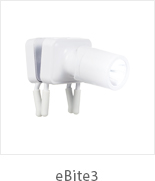| Title | Raynaud's Disease: Understanding Symptoms, Causes, and Treatment. |
|
Raynaud's disease, also called Raynaud's phenomenon or Raynaud's syndrome, is a situation characterized by episodes of reduced blood flow to the extremities, typically the fingers and toes, in response to cold temperatures or stress. This causes the affected areas how To cope with disability show white or blue and feel cold and numb, followed by redness, tingling, or throbbing as blood flow returns. Symptoms The main symptoms of Raynaud's disease embrace: - Color Changes: Affected areas, often fingers and toes, may turn white or blue in response to chilly or stress. - Numbness or Tingling: The affected areas might feel chilly, numb, or tingly throughout an episode. - Pain or Throbbing: As blood flow returns, affected areas could turn into pink, heat, and painful. Causes The exact cause of Raynaud's illness is not absolutely understood, however it is believed to involve abnormal blood vessel response to chilly temperatures or emotional stress. Factors that may improve the chance of developing Raynaud's illness include: - Cold Temperatures: Exposure to chilly temperatures can trigger episodes of Raynaud's. - Stress: Emotional stress or anxiousness may set off episodes. - Underlying Conditions: Raynaud's could occur as a secondary condition to other well being points, such as autoimmune diseases like lupus or rheumatoid arthritis. Treatment Treatment for Raynaud's disease focuses on managing symptoms and stopping issues. This could embrace: - Keeping Warm: Avoiding chilly temperatures and wearing heat clothing, gloves, and socks can help stop episodes. - Stress Management: Learning rest methods and stress-reduction strategies could help scale back the frequency and severity of episodes triggered by emotional stress. - Medications: In severe instances, medications such as calcium channel blockers, alpha-blockers, or vasodilators could also be prescribed to help loosen up blood vessels and improve blood move. - Avoiding Triggers: Identifying and avoiding triggers, corresponding to publicity to cold or certain drugs, might help prevent episodes. Complications While Raynaud's disease itself isn't sometimes dangerous, severe or prolonged episodes can lead to complications corresponding to: - Skin Sores or Ulcers: Reduced blood move to the extremities can cause pores and skin sores or ulcers, particularly in extreme cases. - Gangrene: In rare instances, extreme episodes of decreased blood flow can lead to tissue demise (gangrene), requiring medical intervention. Conclusion Raynaud's illness is a situation characterised by episodes of lowered blood circulate to the extremities, usually triggered by chilly temperatures or stress. While not usually harmful, it could possibly trigger discomfort and result in issues in severe cases. By managing triggers, maintaining warm, and seeking medical treatment when needed, individuals with Raynaud's illness can successfully handle their symptoms and prevent complications. |
|











